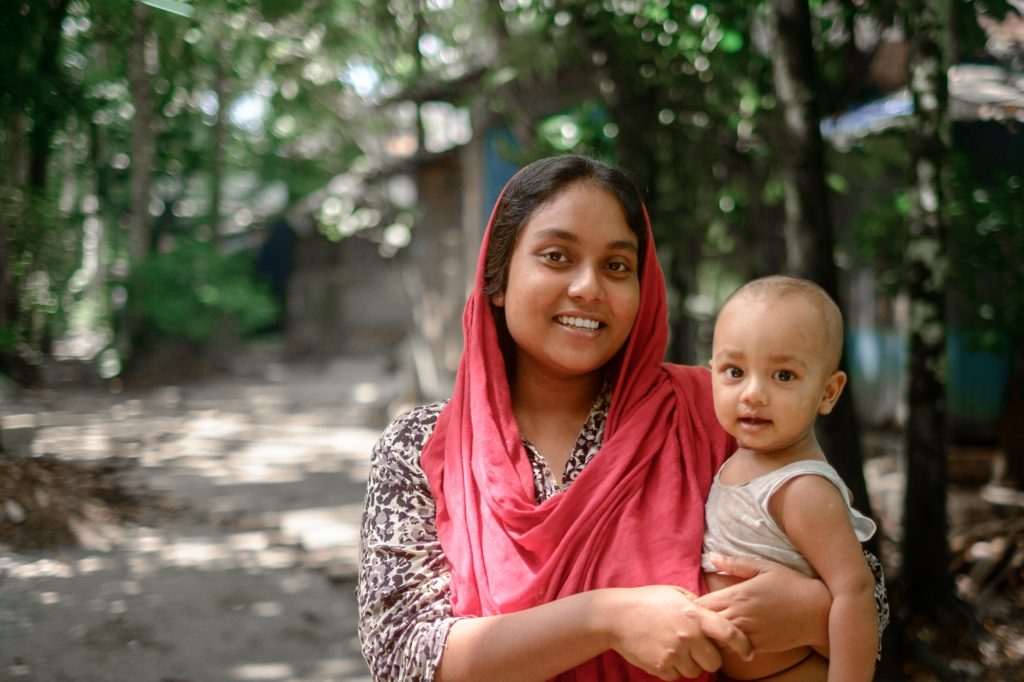Infanticide, the deliberate act of ending the life of a very young child, remains a distressing and poignant issue in contemporary society. Although the prevalence of this practice has decreased over time, it continues to serve as a strong reminder of a profound violation of a child’s inherent right to life. The complexities surrounding infanticide are deeply intertwined with factors such as inadequate maternal healthcare and deeply rooted cultural traditions. While some progress has been made, infanticide accentuates the ongoing challenges we face in safeguarding the lives of the most vulnerable among us.

Forms of child murder: definition and implications
Infanticide, filicide, and neonaticide represent distinct forms of child murder has roots tracing back to ancient history. These acts can be committed by mothers, fathers, or any other members of the community who assume the role of a parental figure.
Infanticide is the act of intentionally ending the life of a newborn baby. Historically, it has been seen as a way to control population size and eliminate infants considered weak or deformed. However, in some societies, infants are put to death or allowed to die in exceptional circumstances. For instance, among the Eskimo, harsh living conditions sometimes led to the practice of killing female infants shortly after birth to ensure there were enough husbands to support the female population (Britannica, 2023).
Filicide comes from the Latin words “filius” (son) and “filia” (daughter), and “-cide” (to kill), referring to both the act and the person committing it. . The legal definition varies across countries; some nations apply it to maternal perpetrators, while Western countries increasingly convict fathers of filicide. The legal framework for filicide balances treatment and punishment, often reducing penalties for mothers committing this crime in the first year of a child’s life due to factors like postpartum distress (Almeida F et al., 2017).
Neonaticide, which involves the murder of infants aged less than one month, typically takes place shortly after delivery, often within hours, and is frequently associated with unwanted pregnancies (Byard W. R, 2016). The British Infanticide Act acknowledges that childbirth’s biological changes, like hormones and nervous system adjustments, can be connected to conditions such as pregnancy denial and hysteria (Spinelli G. M, 2001).
In a study conducted in the United States, researchers examined sixteen women accused of neonaticide through psychiatric evaluations. The findings revealed a common pattern among the women, including symptoms like depersonalization, dissociative hallucinations, and amnesia during delivery. This study shed light on the need for treatment strategies to prevent neonaticide and highlighted the unique vulnerability of women during childbirth (Spinelli G. M, 2001).
The act of killing an infant has a complex history with significant implications. Throughout human history, infanticide has been practiced in various cultures and accepted as a means of family planning. However, it contrasts sharply with contemporary values that prioritize the protection and sanctity of a child’s life (Newman S, 2017).
Examining the methods: active vs. passive infanticide
Infanticide can be categorized into two primary types: active and passive. Active infanticide involves deliberate actions that directly lead to the death of infants. Conversely, passive infanticide is characterized by neglect in terms of medical, nutritional, physical, or emotional care, which indirectly leads to infant mortality. Active infanticide is often driven by cultural or gender-related factors, while passive infanticide can result from inadequate resources or support for families facing difficulties (CRIN, 2011).
However, ethics professionals question the conventional distinction between passive and active killing, contending that intentionally refraining from preventing a negative outcome carries the same moral significance to causing that outcome when motives align. This perspective questions the inherent moral disparity between allowing someone to die and actively taking their life (Tooley M, 2002).
According to post-mortem data from the District Court in Poznań (Poland) covering the years 1990 to 2000, most female offenders were young, single, working-class individuals aged 17 to 42 with low education levels. The primary method employed in 80% of cases was active infanticide, often involving confining the child or obstructing the throat and larynx, while passive infanticide occurred in 20% of cases. It’s noteworthy that none of the cases displayed signs of psychosis (Kołowski J. et al., 2005).
Infanticide triggers: life challenges and unwanted pregnancies

Despite significant advancements in psychology and social sciences, defining the motivations and risk factors remain challenging. This difficulty arises because infanticide is influenced by a complex combination of psychological, sociocultural, and economic factors, and these interact differently in various communities and situations. To comprehend and prevent this tragic occurrence, it is essential to delve into the traumatic experiences of parents and the circumstances that lead to infanticide.
Such experiences may include a history of abuse, neglect, mental illness, substance abuse, poor parenting skills, and a lack of social support. Additionally, triggers include strained interpersonal relationships, marital conflicts, domestic violence, losses, separations, adverse living conditions, traumatic events, and financial difficulties (Ozdemir F. D. et al., 2021).
In developing countries like Senegal, infanticide is a significant issue, with women accused of killing their newborn babies leading to a significant number of female prisoners. These cases often stem from pregnancies deemed unwanted due to social stigma and potential dishonor. The stigma surrounding these pregnancies is profound, pushing them to desperate measures (Gaeste A, 2018). Women who experience such pregnancies thus resort to infanticide as a response, often in isolation.
One contributing factor to this problem is Senegal‘s strict abortion laws. Abortions are illegal in Senegal except when the mother’s health is in danger and requires approval from two doctors and a prosecutor. This makes access to safe abortions nearly impossible, leaving women with no viable options in cases of unwanted pregnancies. Efforts to reform these laws are underway, but they face resistance due to religious and societal factors (Gaeste A, 2018).
Infant life preservation
To prevent the tragic act of infanticide, both legal reforms and changes in societal attitudes are necessary to support women facing unwanted pregnancies. This should involve cooperation and collective efforts from government authorities, societal institutions, and non-governmental organizations.
For instance, India showcases efforts to combat infanticide, driven by deeply rooted gender biases. The government enforces laws, launches awareness campaigns, and offers financial incentives to address gender-determining technologies and gender-selective abortion. The stark gender imbalance is evident, with 90% of abandoned children being girls, highlighting societal perceptions of their productivity (Gender in Geopolitics Institute, 2021).

However, despite these measures, the reduction in infanticide is primarily attributed to health-related factors. Regrettably, gender discrimination and violence against women remain pervasive issues, underscoring the need for continued and unwavering efforts to drive meaningful change (Gender in Geopolitics Institute, 2021).
Nevertheless, countries like India and Senegal must persist in their efforts to combat deep-seated gender discrimination and violence against women. This involves enforcing existing laws more rigorously and sustaining initiatives that foster gender equality and empower women across society.
To prevent infanticide and suicide in postpartum psychosis cases, every country should establish a robust healthcare system that prioritizes optimal inpatient care, to ensure safety, accurate diagnosis, and swift treatment initiation. Prompt identification is vital for timely intervention, which involves ensuring sufficient post-birth rest, immediate medication, and seeking consultation with a psychiatrist. (Healio Psychiatry, 2019).
Written by Lidija Misic
Internally proofread by Aditi Partha
Last updated on 24 September 2023
Bibliography:
Almeida Fatima et al. (2017), Chapter 5 – Profiling in Violent Crimes: The Perpetrator and the Victim in Cases of Filicide. Retrieved from ScienceDirect at https://www.sciencedirect.com/science/article/abs/pii/B9780128092873000055. Accessed on 23 September 2023.
Britannica (2023), The Information Architects of Encyclopaedia. “infanticide”. Retrieved from the Encyclopedia Britannica at https://www.britannica.com/facts/infanticide. Accessed on 23 September 2023.
Byard W. Roger (2016) Neonaticide. Retrieved from ScienceDirect at https://www.sciencedirect.com/science/article/abs/pii/B9780128000342003013. Accessed on 23 September 2023.
CRIN (2011), Forms of violence: Infanticide. Retrieved from Child Rights International Network at https://archive.crin.org/en/library/publications/forms-violence-infanticide.html. Accessed on 23 September 2023.
Gaestel Allyn (2018), Why Infanticide Is A Problem In Senegal. Retrieved from NPR at https://www.npr.org/sections/goatsandsoda/2018/10/03/631892291/why-infanticide-is-a-problem-in-senegal. Accessed on 23 September 2023.
Gender in Geopolitics Institute (2021), To be born a woman in India. Foeticide and infanticide: origins, consequence, and solutions. Retrieved from Gender in Geopolitics Institute at https://igg-geo.org/?p=5229&lang=en. Accessed on 23 September 2023.
Healio Psychiatry (2019), Strategies to help prevent infanticide, suicide in postpartum psychosis. Retrieved from Healio Psychiatry at https://www.healio.com/news/psychiatry/20190731/strategies-to-help-prevent-infanticide-suicide-in-postpartum-psychosis. Accessed on 23 September 2023.
Kołowski Janusz. et al. (2005), [Infanticide in the light of post-mortem findings and court files from the period 1990-2000 (selected problems)]. Retrieved from National Library of Medicine at https://pubmed.ncbi.nlm.nih.gov/16080428/. Accessed on 23 September 2023.
Newman Sandra (2023), Infanticide. Retrieved from Aeno at https://aeon.co/essays/the-roots-of-infanticide-run-deep-and-begin-with-poverty. Accessed on 23 September 2023.
Ozdemir Foto Dilsad et al. (2021), Killing One’s Own Baby: A Psychodynamic Overview with Clinical: Approach to Filicide Cases. Retrieve from Turkish Journal of Psychiatry at https://www.turkpsikiyatri.com/PDF/C32S3/en/TPD_c32(3)_201-210.pdf. Accessed on 23 September 2023.
Spinelli G. Margaret (2001), A Systematic Investigation of 16 Cases of Neonaticide. Retrieved from The American Journal of Psychiatry at https://ajp.psychiatryonline.org/doi/10.1176/appi.ajp.158.5.811. Accessed on 24 September 2023.
Tooley Michael (2022), An Irrelevant Consideration: Killing versus Letting Die. Retrieved from https://www.qcc.cuny.edu/socialsciences/ppecorino/deathanddying_text/Tooley.htm. Accessed on 23 September 2023.

